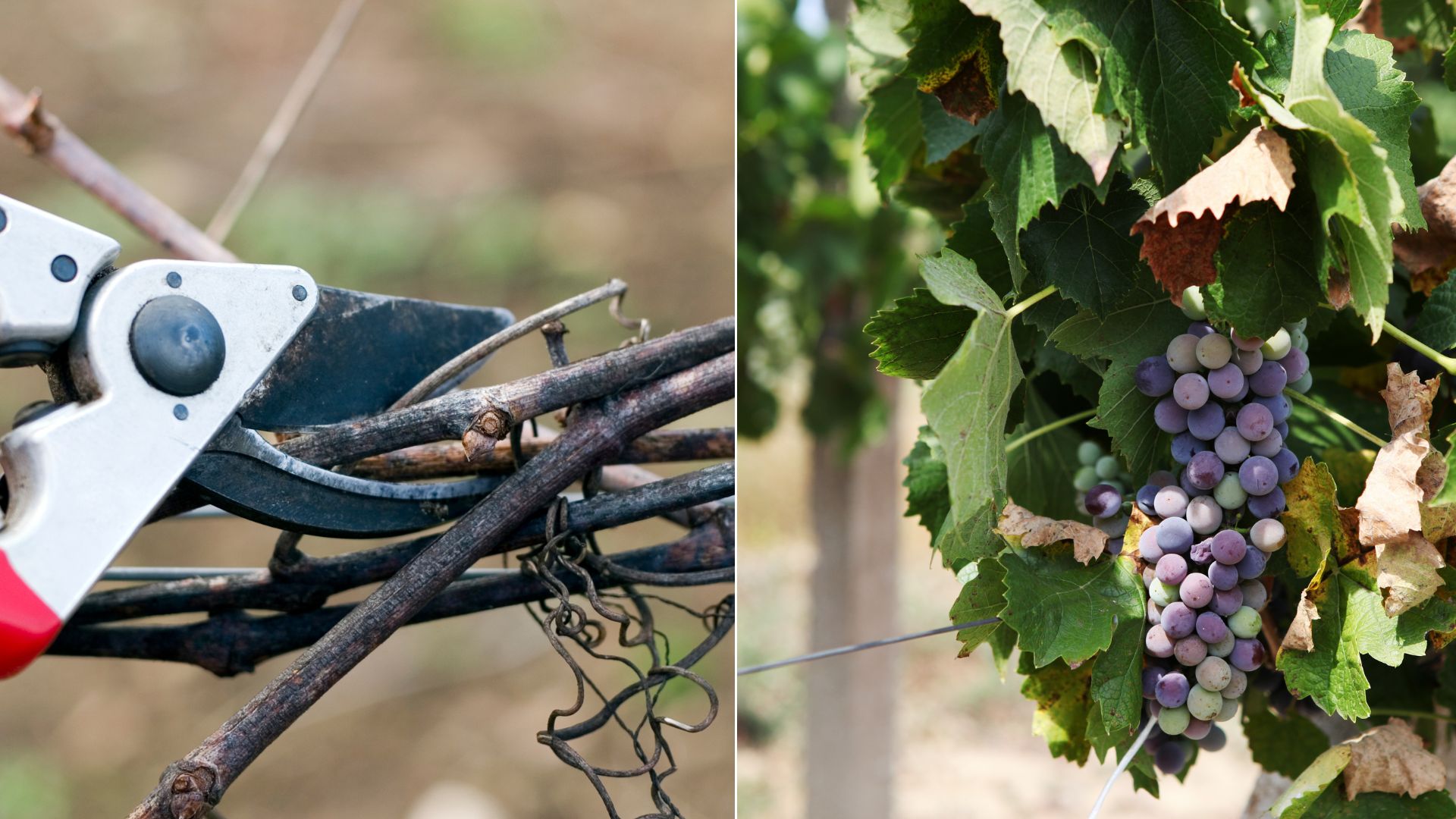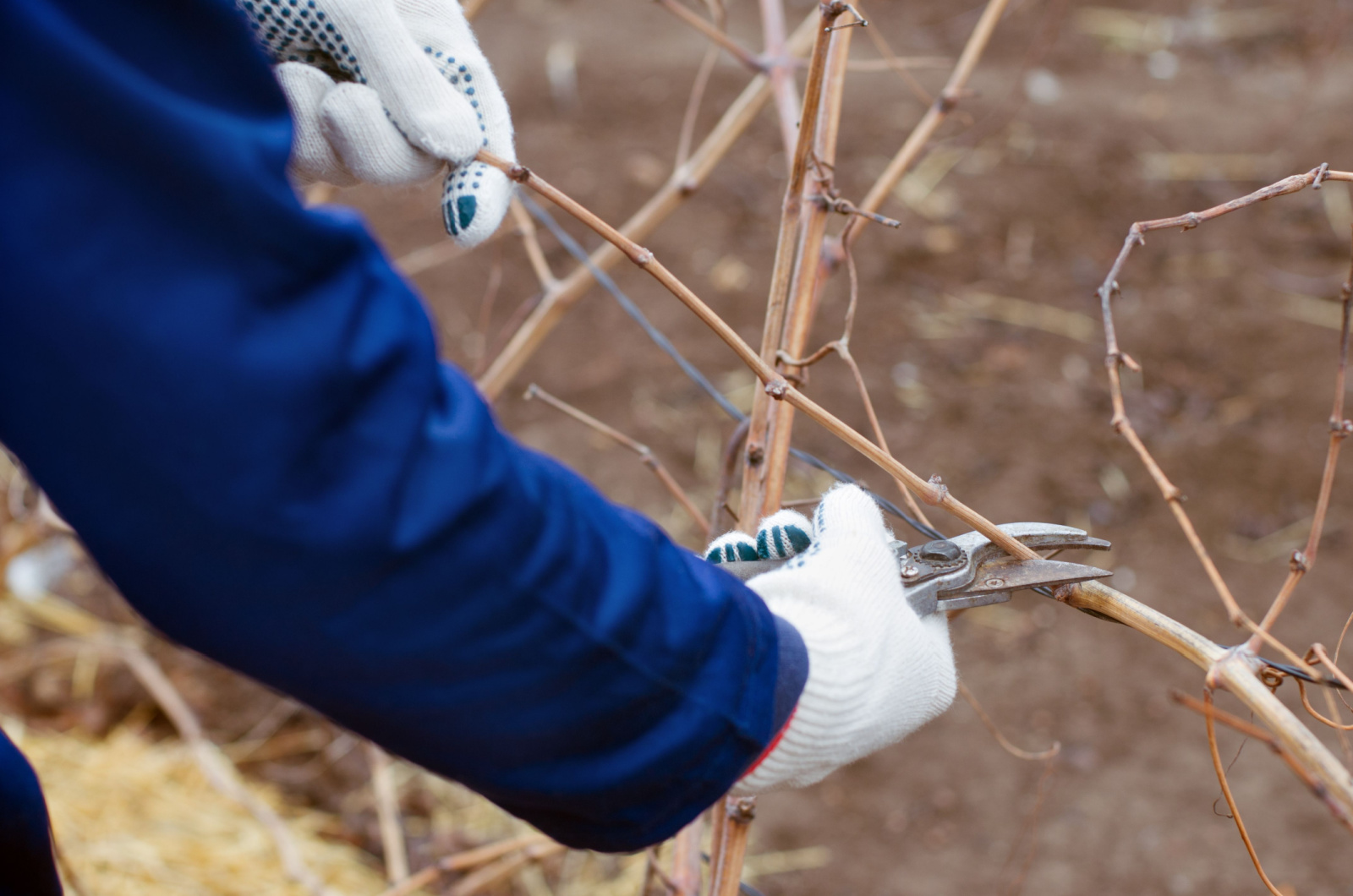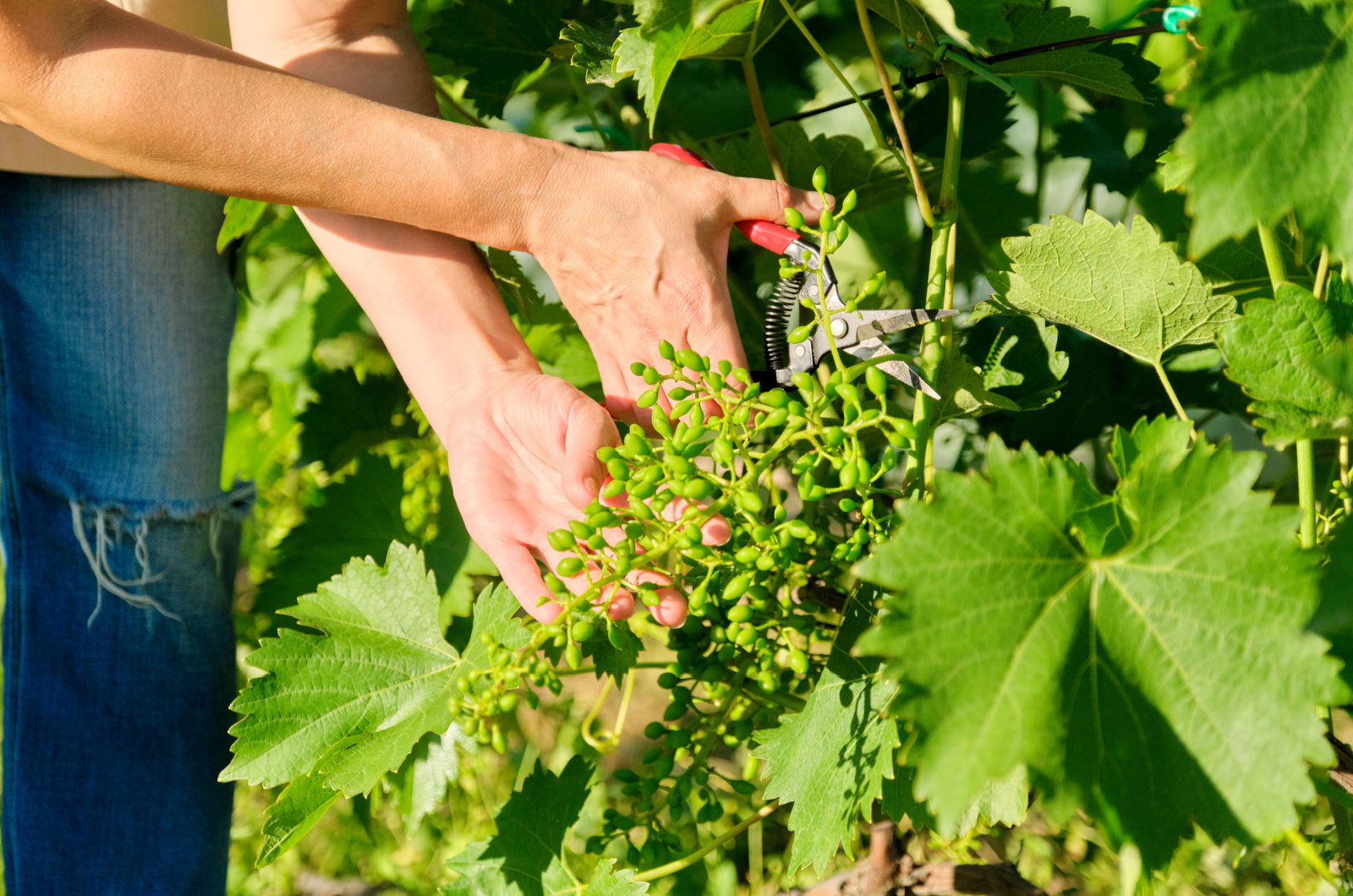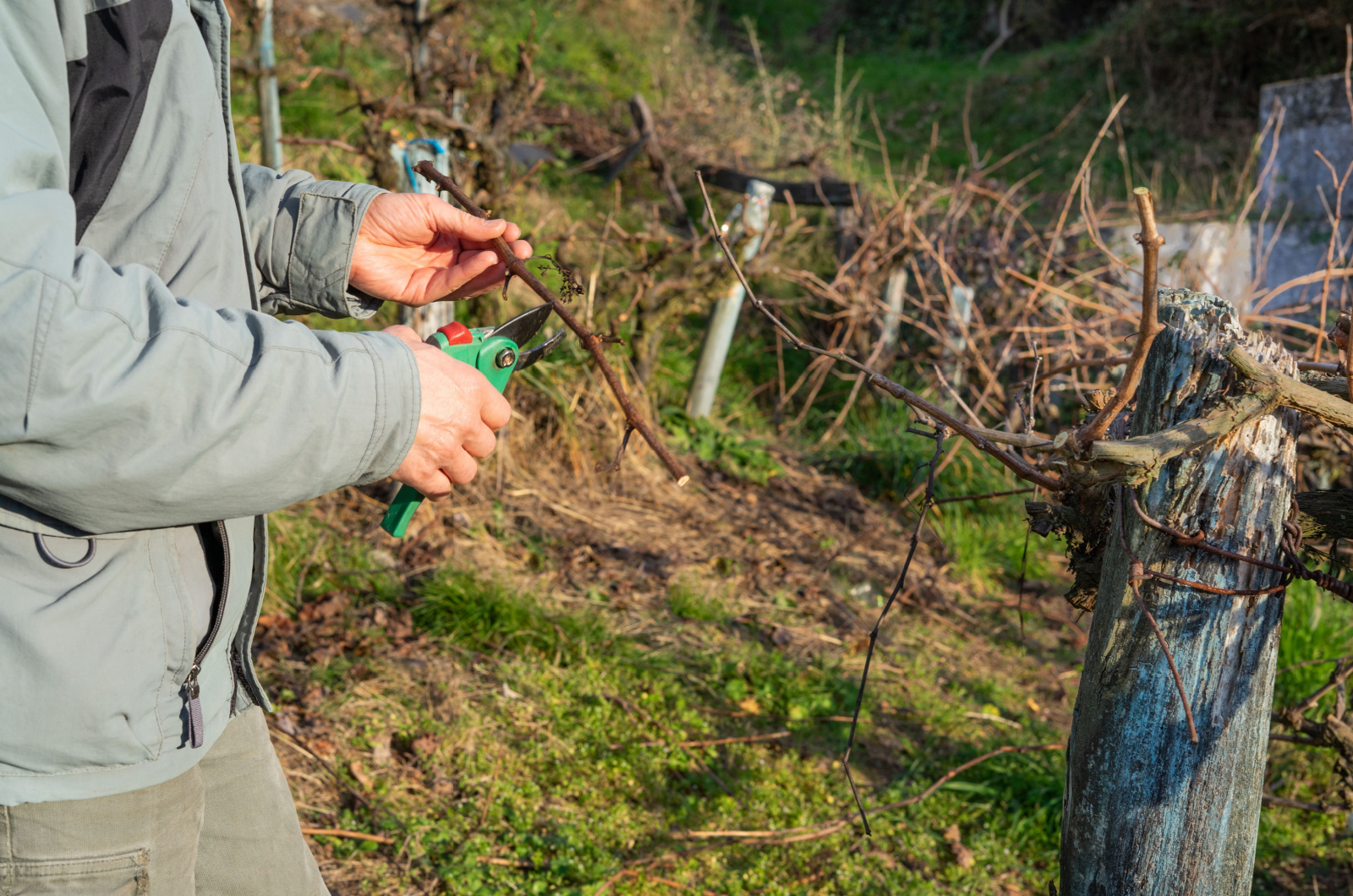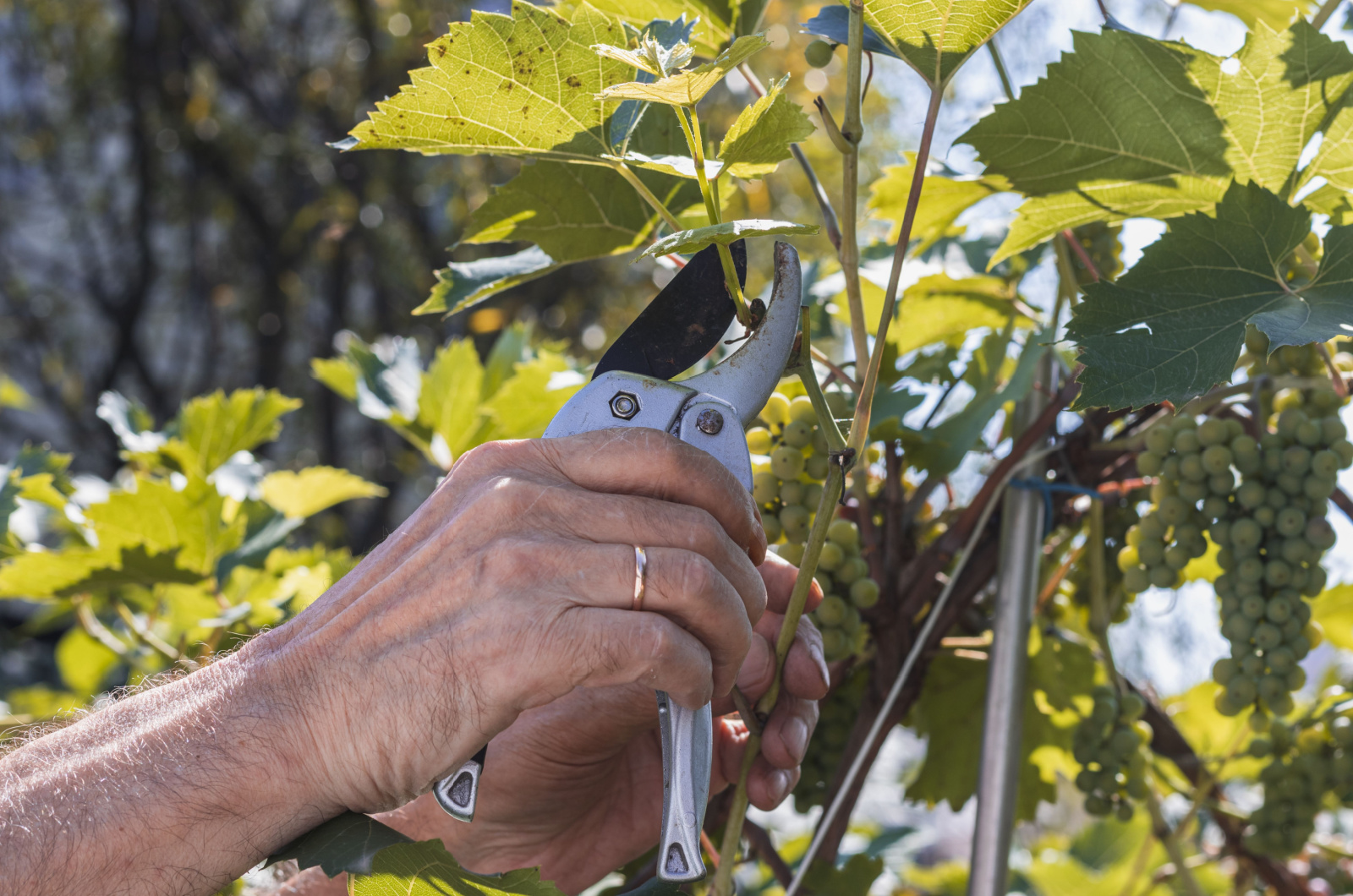Pruning grape vines ensures you have thriving plants and a huge harvest, but you can do it whenever you want.
The right trimming time will make or break your yield, which is why you have to be careful when choosing it.
Here are some tips that can help you out as well as some answers to the questions you most likely have (I know I had them).
Let’s get started!
Winter Pruning
If you want to grow your muscadine grapes successfully, you have to cut them back at the right time.
Prune your outdoor grape vines during their dormant season – in winter. Make sure to always use clean, sterilized, and sharp tools during this job. It will prevent diseases entering your plant and won’t damage the vines by ripping them apart.
Growers usually trim their grape vines some time from January to March, which depends on the climate you live in. Ideally, you want to prune these fruit vines right before they set buds.
Give your grapes a good trim after the last hard freeze (28°F or lower). If you trim them too early, you put your vines at risk of frost damage and increase their susceptibility to diseases.
One thing that can help you decide what the right time for pruning these vines is is their sap. Prune the grapes before the sap starts to flow and it will help the incisions heal naturally.
But if you grow grape vines indoors or in a greenhouse, this pruning window is smaller. Sure, you’ll still do it in winter, but only from November to December.
Early January is the last time to tackle this chore for indoor-grown grapes, any later than that, and the sap will start to bleed, making the wound heal a lot slower and putting your vines at risk of infections.
Summer Pruning
You can trim your grape vines lightly during the summer to control their growth and remove the excess that built up during the growing season.
Do it the right way, and you’ll introduce more air circulation to your vines, reducing the risk of fungal diseases such as powdery and downy mildew.
There are two pruning chores you can do in summer: thinning and leafing.
Thinning reduces the fruit load and excessive production, preventing the vines from breaking under such a heavy load. Leafing refers to removing extra foliage in order to improve airflow and sun exposure to the innermost parts of grape vines.
The best time to thin your grape shoots is in the early summer, when they are still small and more manageable. As far as leafing is concerned, you can do it all through summer.
Just remember to prune lightly during this period because fresh cuts can make your vines more susceptible to fungal diseases during warm and humid conditions.
Finally, removing too many shoots and leaves may affect your yield in fall and reduce crop production.
Pruning Grape Vines In Fall
Almost every list of fruit vines contains grapes because of their popularity and easy maintenance, including pruning. However, this job shouldn’t be done whenever you want.
Fall pruning is generally not recommended because your vines might not enter dormancy at that time. If they are still awake, pruning can entice new growth and put your grape vines at the risk of frost damage.
Early fall pruning can also increase the risk of infections because the sap that bleeds out of the wound prevents it from healing properly.
Trimming Grape Vines During Their Growing Season
You can prune your grape vines during their growing season. That’s what summer pruning is all about.
But remember we only do a light trim at this time, such as removing excess shoots and leaves to improve air circulation and prevent vines from breaking.
If you want to do anything more than this, you should wait for winter.

